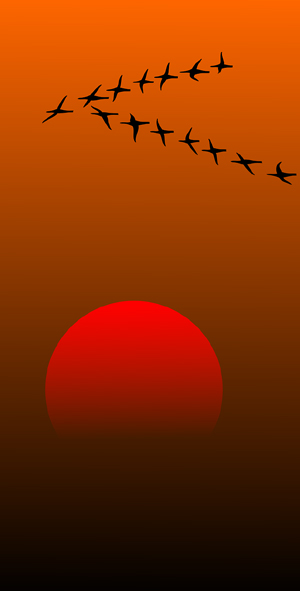Ball sport
An Argentine family playing bocce in San Vicente, Buenos Aires, c.1902
Bocce play in Cape Coral, Florida, US in 2007Bocce 👄 being playeda typical bocce set
Bocce ( ,[1][2] or ,[3] Italian: [ˈbɔttʃe]), sometimes anglicized as bocce ball,[4] bocci[5] or boccie,[1] is 👄 a ball sport belonging to the boules family.
Developed into its present form in Italy, it is closely related to British 👄 bowls and French pétanque, with a common ancestry from ancient games played in the Roman Empire.
Bocce is played around western, 👄 southern and southeastern Europe, as well as in overseas areas with historical Italian immigrant population, including Australia, North America, and 👄 South America, principally Argentina and the southern Brazilian state of Rio Grande do Sul.
Initially played just by the Italian immigrants, 👄 the game has slowly become more popular with their descendants and more broadly.
History [ edit ]
Having developed from games played 👄 in the Roman Empire, Bocce developed into its present form in Italy,[6] where it is called bocce, the plural of 👄 the Italian word boccia which means 'bowl' in the general sporting sense,[7] it spread around Europe and also in regions 👄 to which Italians have migrated.
First form of regulation was described in the book "Gioco delle bocchie" by Raffaele Bisteghi in 👄 1753.
[8] In South America it is known as bochas, or bolas criollas ('Criollo balls') in Venezuela, and bocha in south 👄 Brazil.
The accessibility of bocce to people of all ages and abilities has seen it grow in popularity among Special Olympics 👄 programmes globally and it is now the third most played sport among Special Olympics athletes.[9]
Geographical spread [ edit ]
The sport 👄 is also very popular on the eastern side of the Adriatic, especially in Croatia, Serbia, Montenegro, and Bosnia and Herzegovina, 👄 where the sport is known in Serbo-Croatian as boćanje ('playing boće') or balote (colloquially also bućanje).
[10][11][12] In Slovenia the sport 👄 is known as balinanje[13] or colloquially 'playing boče', or bale (from Italian bocce and Venetian bałe, meaning 'balls').
[14] There are 👄 numerous bocce leagues in the United States.
Most have been founded by Italian Americans but contain members of all groups.
Rules and 👄 play [ edit ]
Bocce is traditionally played on a natural soil or asphalt court up to 27.
5 metres (90 ft) 👄 in length and 2.5 to 4 metres (8.2 to 13.1 ft) wide.
[15] While the court walls are traditionally made of 👄 wood or stone, many social leagues and Special Olympics programs now use inflatable 'Packabocce' PVC courts due to their portability 👄 and ease of storage.
[16][17] Bocce balls can be made of wood (traditional), metal,[15] baked clay, or various kinds of plastic.
Unlike 👄 lawn bowls, bocce balls are spherical and have no inbuilt bias.
A game can be conducted between two players, or two 👄 teams of two, three, or four.
A match is started by a randomly chosen side being given the opportunity to throw 👄 a smaller ball, the jack (called a boccino ('little bocce') or pallino ('bullet' or 'little ball') in Italian, depending on 👄 local custom), from one end of the court into a zone 5 metres (16 ft) in length, ending 2.5 metres 👄 (8.
2 ft) from the far end of the court.
If the first team misses twice, the other team is awarded the 👄 opportunity to place the jack anywhere they choose within the prescribed zone.
[6] Casual play is common in reasonably flat areas 👄 of parks and yards lacking a Bocce court, but players should agree to the minimum and maximum distance the jack 👄 may be thrown before play begins.
The side that first attempted to place the jack is given the opportunity to bowl 👄 first.
Once the first bowl has taken place, the other side has the opportunity to bowl.
From then on, the side which 👄 does not have the ball closest to the jack has a chance to bowl, up until one side or the 👄 other has used their four balls.
At that point, the other side bowls its remaining balls.
The object of the game is 👄 for a team to get as many of its balls as possible closer to the target ball (jack, boccino, pallino) 👄 than the opposing team.
The team with the closest ball to the jack is the only team that can score points 👄 in any frame.
The scoring team receives one point for each of their balls that is closer to the jack than 👄 the closest ball of the other team.
The length of a game varies by region but is typically from 7 to 👄 13 points.[18][6]
Players are permitted to throw the ball in the air using an underarm action.
This is generally used to knock 👄 either the jack or another ball away to attain a more favorable position.
Tactics can get quite complex when players have 👄 sufficient control over the ball to throw or roll it accurately.
[6]Variants [ edit ]Bocce volo [ edit ]
A variation called 👄 bocce volo uses a metal ball, which is thrown overhand (palm down), after a run-up to the throwing line.
In that 👄 latter respect, it is similar to the French boules game jeu provençal also known as boule lyonnaise which is internationally 👄 called sport-boules.
Another French variant of the game is called pétanque, and (lacking the run-up) is more similar in some respects 👄 to traditional bocce.[19]Boccia [ edit ]
Australian boccia team members
Another development, for persons with disabilities, is called boccia.
It is a shorter-range 👄 game, played with leather balls on an indoor, smooth surface.
Boccia was first introduced to the Paralympics at the 1984 New 👄 York/Stoke Mandeville Summer Games, and is one of the only two Paralympic sports that do not have an Olympic counterpart 👄 (the other being goalball).
[20]See also [ edit ]



